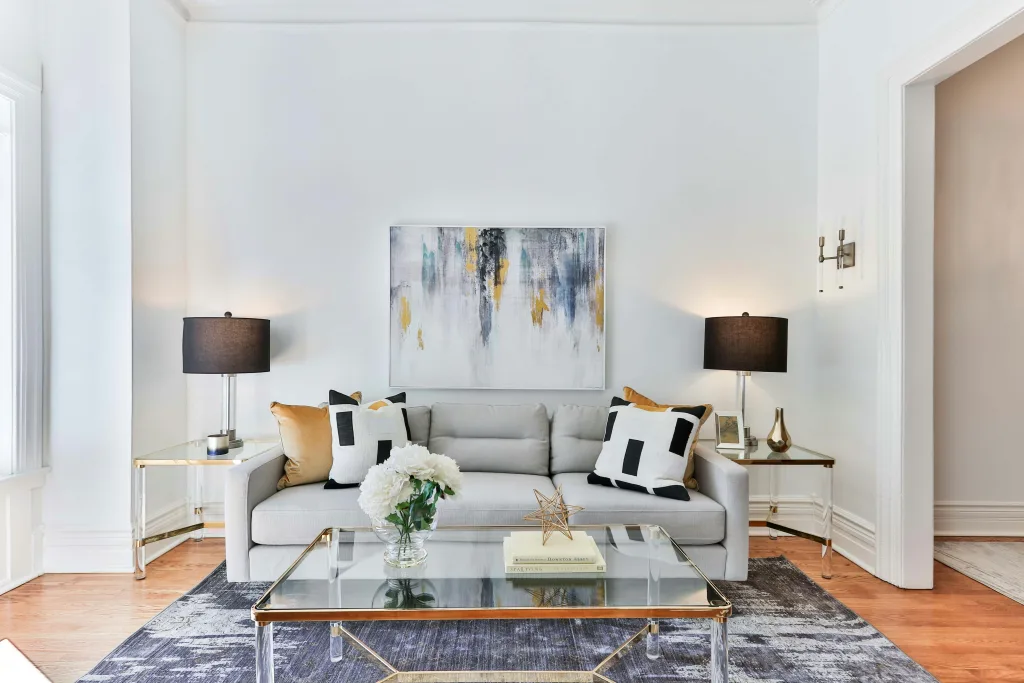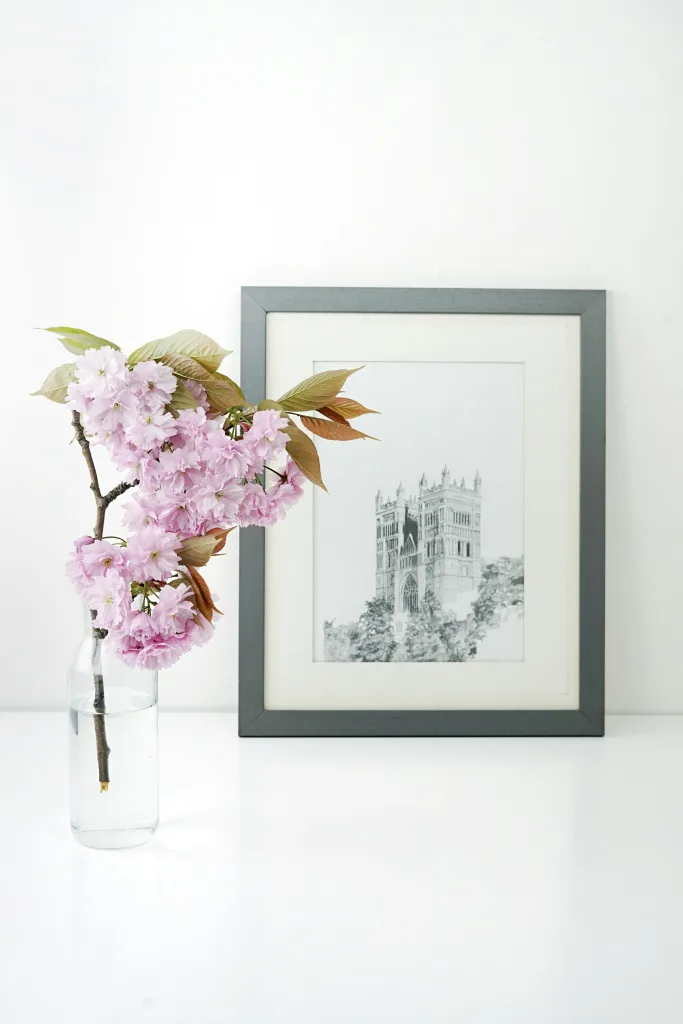
By Mimi Greenwood Knight
The right piece of art can do many things. It can evoke emotion, tell a story, start a conversation, serve as a focal point, and finish off a room. When considering artwork for your home, here are some things to consider.

Begin by evaluating the space and what size artwork would fit without looking too big or too small. Do you want one dramatic piece or a grouping? Next, consider your budget. From affordable prints to high-end originals, how much can you comfortably spend without straining your finances? Don’t forget to factor in the cost of framing and lighting your art. Knowing your price and the size that will work best in your space will help narrow your search.

What kind of statement are you hoping to make? Do you want to color match or color crash? If you have a neutral palette, it can be fun to excite the eye with a pop of color. But if you already have a lot of colors in play, it might be better to choose a few and buy a piece that echoes those shades.
What mood would you like to create? Sophisticated and elegant or playful and fun? Artwork for the primary bedroom might be calming and therapeutic, while works in the living areas are more energetic and vibrant. And you might go downright zany in your outdoor spaces.

You do want to look for consistency in form and line. If your living room furniture features soft curves and fluid lines, look for artwork with sweeping strokes or flowing movement. If your home office furniture has hard, angled, industrial lines, look for art with defined lines and crisp detail.

Your frame and lighting are important, too. A frame should work as a bridge between the artwork and its surroundings. You might coordinate your natural wood furniture with a wood frame, or you can create excitement by contrasting vintage gold frames within a modern interior. Again, it’s all about the statement you want to make and emotions you want to evoke.

Generally, lighting should be three times brighter than the rest of the room. You can create this effect by using dimmer lights in the rest of the space or by selecting brighter artwork lights. LED lights are a good choice for bringing out the best in any artwork and reduce the risk damaging your piece.

While there are many online art sellers, it’s best to see the work in person before you buy it. And if you find selecting your own artwork too stressful, consider enlisting the help of a decorator or professional art consultant who will work with you to find the perfect artwork for each space in your home.
When all is said and done, the right piece of artwork for your home is the piece you like, that makes you feel the way you want to feel, and makes your space look the way you want it to look.

Just Picture It!
Mona Lisa’s Hidden Secrets:
Leonardo da Vinci’s famous painting is said to hide many secrets, including the tiny letters and numbers in her eyes.
Largest Art Theft:
In 1990, 13 pieces worth $500 million were stolen from the Isabella Stewart Gardner Museum in Boston; they remain missing.
Expensive Doodle:
Pablo Picasso’s doodles on napkins are highly valuable and have been sold for thousands of dollars.

Van Gogh’s Love for Yellow:
Vincent van Gogh used the color yellow extensively, which some believe was due to a condition called xanthopsia, making him see colors more vividly.
Invisible Art:
Artist Yves Klein created “invisible” works, selling empty spaces in exchange for gold.
Banksy’s Pranks:
Street artist Banksy once shredded his artwork, Girl with Balloon, right after it was auctioned for over 1 million pounds.
Leonardo’s Notebook:
Bill Gates purchased Leonardo da Vinci’s notebook, the Codex Leicester, for $30.8 million in 1994, showcasing the intersection of art, science, and history.
Fantastic Find:
For years, a family used a thrift-store painting to cover a hole in the wall until, one day, they noticed a similar painting in the board game Masterpiece. It turns out they had a $1.2 million Martin Johnson Heade.
Craving more about art? Visit LivingMagazine.net/homestead for more!










